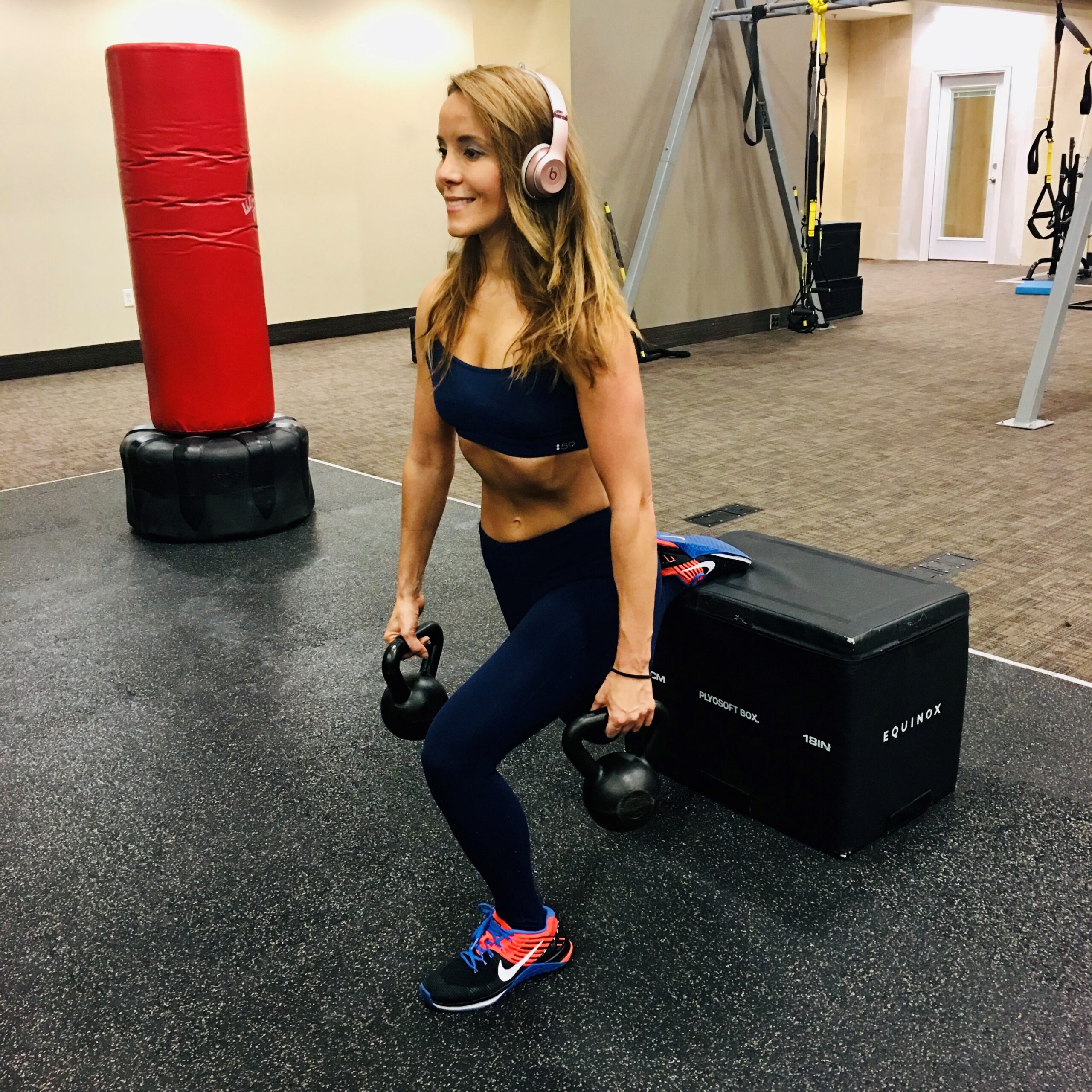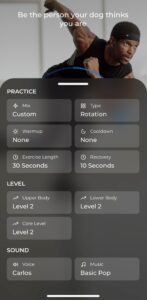By popular demand, I am providing my sample exercise plan and template. It’s based on the formula HIIT+LISS+STRENGTH TRAIN = SUCCESS.
In addition to the sample plans and moves I provide, I break down all the possible types of workouts you can do so if you don’t like my plan you can just use my template and design/modify it to be your own.
What’s the skinny?
- We previously reviewed how busy AS people sholud make time to workout.
- Now the question is what should you do once you find the time
- As in business, a holistic approach is key. A combination of low and high-intensity cardio, strength training, and precision training is the best insurance for covering all of your bases and keeping your body agile.
- Also as in business, a plan that keeps you organized is important. I have enclosed a sample google sheet for planning workouts populated with my weekly workout plan.
- HERE IS MY SAMPLE WORKOUT SCHEDULE, which you can modify based on your own goals and preferences. Before you dive in, just FYI that I give more details about the specifics of the workout below. This is just the schedule.

Workout Template Links
- Customizable DAOFitLife Workout Plan Google Sheet Template
- Downloadable DAOFitLife Workout Plan Excel Document
- Printable DAOFitlife Workout Plan PDF
What workout to do – and exactly what do all those acronyms mean
There seem to be endless option – but they really only fall into four buckets – low/medium intensity cardio, high intensity cardio, strength training and precision training. There are also terms like LISS, MISS, and HIIT that we should briefly review:
- Low intensity cardio or “LISS” – this includes walking, elliptical, jogging, swimming, stairmaster, or cycling. Any of these above activities, done at a faster pace, for example, running, power walking, arc trainer, or spinning can be “MISS” or medium intensity steady state cardio. It also includes cardio-based classes like boxing, tabata and zumba. You are exerting yourself, but not getting your heart rate above 160 BPM.
- High intensity interval training or “HIIT” – This consists of “sprint” intervals that are supposed to get your heart pounding to the point where you are struggling to breathe (about 90 percent max). The thing is that they are quick so you can recover and repeat. HIIT splits can be done in any combinations of work and rest – 30/30, 45/15, 20/10, 60/60, and so forth. Any of the above activities can be done in sprints – running, Stairmaster, rowing, etc. HIIT also includes plyometric-based training, which is a series of bodyweight movements usually but not always involving jumping to raise your heart rate. Think jump squats, mountain climbers, burpees, and jump lunges. Most “HIIT workouts” incorporate a combination of all of these plus movements that work your whole body, like pushups and core work.
Here is an article that more comprehensively explains the difference between HIIT, MISS, and LISS.
- Strength training and conditioning – this is a broad category, broader than crossfit or weightlifting. The term ‘strength and conditioning training’ refers to the format of exercise which highlights building the strength, size as well as endurance of skeletal muscle. It can include these types of workouts as tools, but it is also good to be aware that you don’t have to be picking up a weight or kettlebells to be strength training. Working on agility, balance, and functional movements are all a part of this. Therefore this category also includes “animal flow” type of movements like bear crawls and frog walks.
- Precision training – precision training refers to any focus on smaller muscles and movements. So here think yoga, barre, and Pilates,
A comprehensive formula- LISS + HIIT + STRENGTH = FIT!
I follow an exercise regime based on steady state cardio 5 days a week, and high intensity interval training twice a week, strength training twice a week, and precision training (yoga, Pilates or barre) twice a week. The formula I follow for working out is as follows:
- 2 HIIT training sessions a week
- 45 min of steady state cardio(LISS OR MISS) 5 times a week
- 2 resistance training sessions twice a week
- 2 precision training sessions a week
- 1 complete rest day
Note that my steady state cardio is done while on work calls; therefore during the week, my net time spent working out daily is 20-30 minutes.
HERE you will find my sample workout schedule.
How did I come up with this? Fitness, like business, is about holistic solutions
My approach is based on years of experimenting, working with trainers, and following specific apps and programs. The bottom line is what I learned you can’t do too much of one thing or your body won’t change. You need to mix it up.
If you think back to when we were working out interactively, you will notice what I always noticed.
- People in the who walked or ran on the treadmill every day
- People who are always only lifting weights
- People who are permanent fixtures in yoga class, spin class, barre class, etc.
And the more I observed, the more I noticed that for the most part, these people’s bodies were not changing. Maybe that’s not why they were doing what they were doing. But if you do want change, and want noticeable results, I think that doing the same thing over and over is a form of insanity – you can’t possibly expect to get results. So my formula covers all of the bases.
I have also experienced the effects of not having a well-rounded workout regime. When I only focused on cardio, I lost muscle and gained fat. When I cut out cardio, I gained muscle and gained fat. When I only did yoga and barre, my body stopped responding after a while.
How you tweak this program will depend on your body type and your diet. If you eat more, you need to burn more calories. If you have a different body type, you may not need to do as much cardio. Keep in mind that this is only a baseline guide and not prescriptive.
HIIT training options (PLUS APPS)
For HIIT training, you can do intervals with a treadmill, bike, or elliptical. If you like Peloton, you can take one of their HIIT spin classes. You can also do a bodyweight HIIT workout, or a boxing workout.
For my HIIT workouts, I usually concentrate on one bodyweight-based HIIT workout, and one HIIT running workout. Generally, I will go for 30 seconds on, and then a one minute rest. You can use the interval timer for this type of HIIT workout. Both the Peloton and Equinox app also have running treadmill HIIT workouts, and Peloton has HIIT-specific spin workouts. I have reviewed both apps here.
HIIT is important to have in addition to steady state cardio, because it spikes your heart rate up, leaving you with a higher and more powerful metabolic burn for the rest of the day. For results, I definitely need both types of cardio in my regime.
For a review of HIIT training apps, click here.
Steady state cardio options (and how you can whittle while you work)
I do cardio everyday, for at least 45 minutes, per the Rachael Attard program, usually while I am on conference calls. See my post on the best fitness apps for weight loss. for more about this program.
This is basically to compensate for the lack of walking that working from home has caused. I used to walk for at least an hour round trip; now I don’t because I work at home. So I make that time my “power walking” time. While I don’t wear a step tracker, I know that 4 miles is about that so that is what I do – and on the tread that takes me about 45 minutes. Doing the walk during calls makes sure no time is compromised. You can usually do this for calls where you aren’t hosting or presenting on a screen. If you use Zoom, Teams, or Google meets, you can keep your camera off if you are not talking. If you work in a company like mine, there are at least a few calls a day of 5 people or more, or general company or client webcasts where your camera is not even supposed to be on. This is a perfect time to experiment with the walking.
If you don’t have a treadmill, you can also walk outside, or not spend a lot of money on a folding treadmill like this one. If you want to get fancy, you can order a Treadly. These are the “quiet” brands that you can use on calls and not have everyone distracted on calls by your treadmill noise.
If you don’t want to pay that much, you can also get a mini stair stepper for under 100 bucks, which can give you just a great full body and a core workout. I have one of these, and it’s more compatible with working into calls because you can easily hop off and go to your computer if you need to talk (it’s not as onerous to shut off as a treadmill).
Strength training options
In the last section of this article I have a workout playlist and sample workout. I challenge you to try doing one “freestyle” workout a week – meaning you structure the workout. I will also include specifics of my strength training workouts in my workout template.
If you want something more easy to follow, I would recommend for strength training specifically the following apps:
Jillian Michaels has a strength training program on her app that is good fir beginners, guides you through it, and gives you a set program of weight lifting and HIIT every day.
Fitplan is another guided strength training program with available at home and gym workouts. You have a choice of different trainers and different programs focused on fat loss are toning. There are definitive categories for both gym and home workouts. In particular, there is a “fitplan her” workout with different trainers, that is specifically aimed at women.
Two other programs that are more “self-customize” are the Fitbod and Strong apps. You can read my review of these “gym bro apps” here.
As previously reviewed you can also explore the SWEAT or the Toneitup apps. So your options for strength training are really far and wide.
If you need help deciding which app is right for you then go back to my fitness app decision tree.
Precision training options
Yoga, Pilates and barre are the main types of precision training. Precision training is what gets those little biddy muscles start to pop, like that hip dip or teardrop shoulder. These also get your core strong, so you can hold.plank.forever. I once won a Big 4 plankholding contest and made a guy from Deloitte cry. But I digress.
Once we emerge further out of COVID, I will do my workout studio review. For now let me refer you to my yoga, barre and Pilates app recommendation.
This type of training is also where a zoom class would be a good expreince, expecially when it is not as familiar to you. For yoga, I would recommend trying a streaming class from one of your local studios.
For the ones I personally do because I know they are good:
Hot house yoga– Run by the Yax brothers Chris and John, with the support of their family, this beach-bound hot yoga studio is where my practice got next level. Now many of the classes are available on live stream, at the schedule at the link.
Cocktails & Relevés Barre – Run by two professional barre teachers, Amy and Naz, this is a 5-day a week zoom barre program with classes focused on arms, abs, legs, booty, and full body. There are several mid-day express classes which make it so easy to take a quick lunch break class. There is also weekly “flow” class similar to yoga, and lots of social get togethers involving cocktails (of course) and coffee.
If you live in an area with a Solidcore, fortunately, the studios have stayed open in an “open gym format”. I am fortunate enough to live across the street from one. Basically, the class s a megaformer style class that is INSANELY challenging for your core and full body. To learn more about Solidcore and their open gym format, click here and here.
Where to get the stuff
You don’t have to be Jeff Bezos to have a tricked-out home gym – in fact, you can have a great one for about 100-200 bucks. Here are some finds categorized by equipment type needed for on-demand/at home workouts
- Dumbbells: The key here is to figure out a couple of weights that you can adapt to a lot of different moves. For example, I can use 8-10 pound dumbbells for bicep curls, single leg deadlifts, tricep exercises, and shoulder presses. The best option for me was to order a weight tree set from Amazon – and if you search around, you can pay less than 20 bucks.
- Yoga Mat– this recent New York times article recommends several, including Lululemon and Gaiam, which are two of the well-known brands.
- Sliders – these compliment a lot of the barre classes and on-demand workout classes. I like this brand from Amazon which is carpet-friendly.
- Benches – an Ottoman or a coffeetable will do it!
The great dumbbell shortage of 2020 saw a surge in demand for this popular type of equipment; but you can also invest in armbands and legbands (which you can get for decent prices at the Tone it up website). while you are waiting for that to get back in stock (and they are less expensive). If you are really serious about a home gym for post-pandemic times, consider getting the bowflex adjustable weights. It’s much cheaper than a peloton and allows you to change weight from 5 to 52.5 pounds.
Key takeaway
You can and will find your rhythm when it comes to working out. It only takes 3 pillars: Ability, time, and motivation. I have helped you find your motivation and your why. I have helped you with finding the time. The ability may seem daunting at first, but so was your first day at your new job. And look where you are now. You can do that, and you can do this too.











